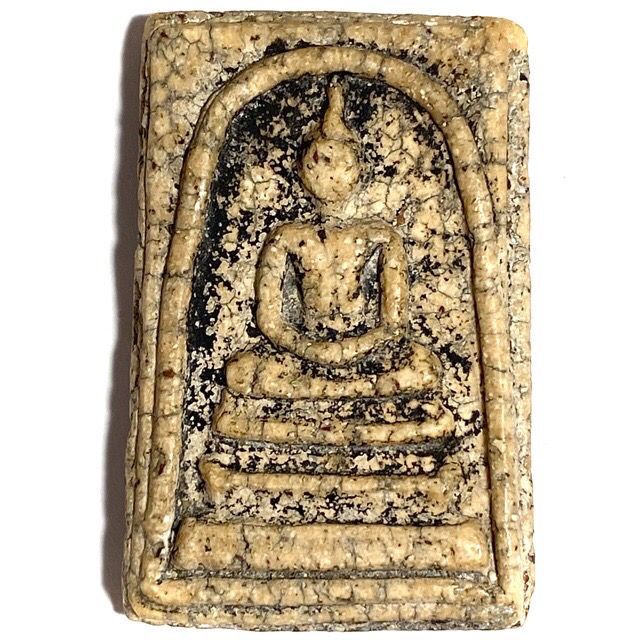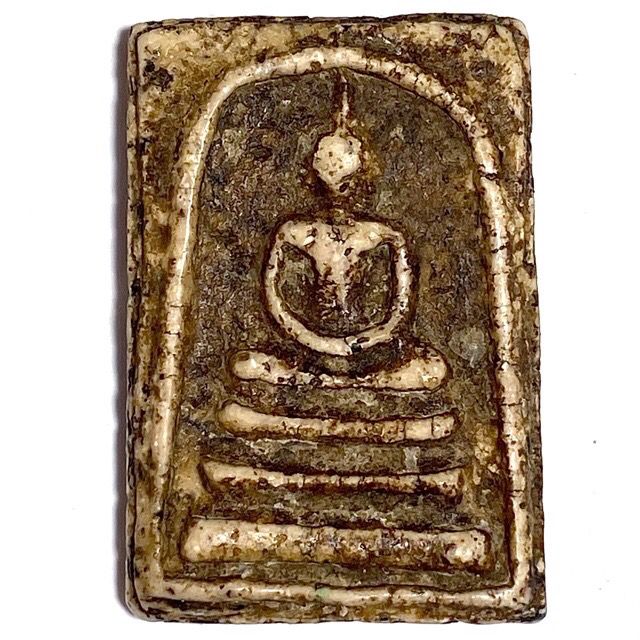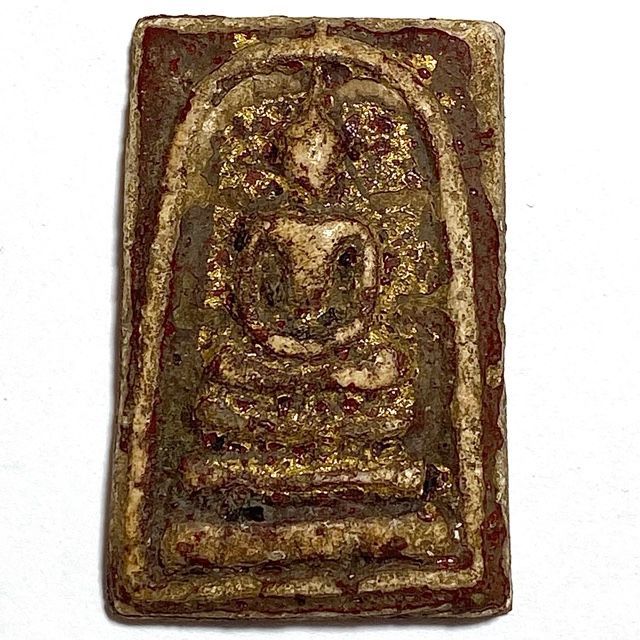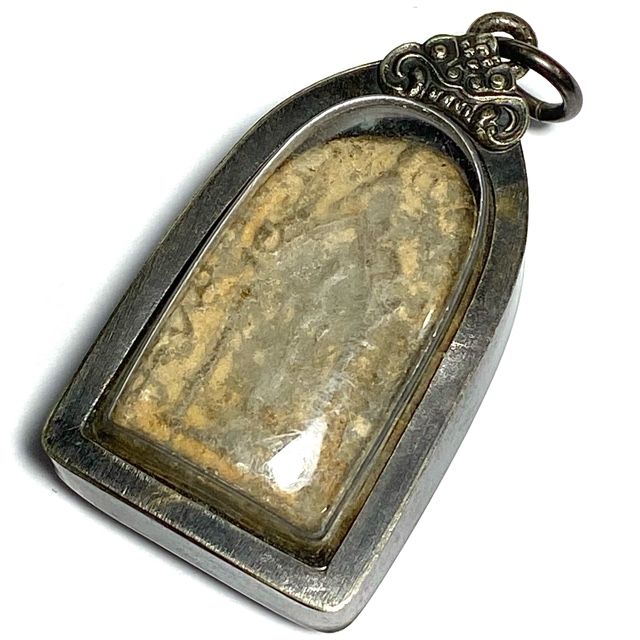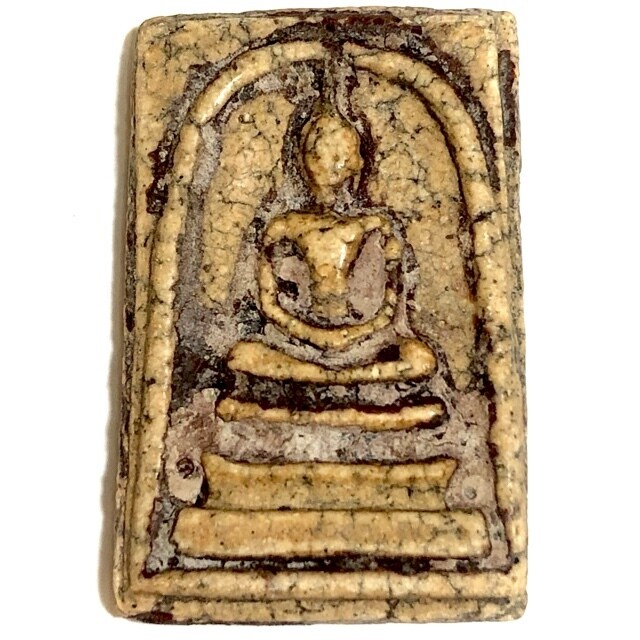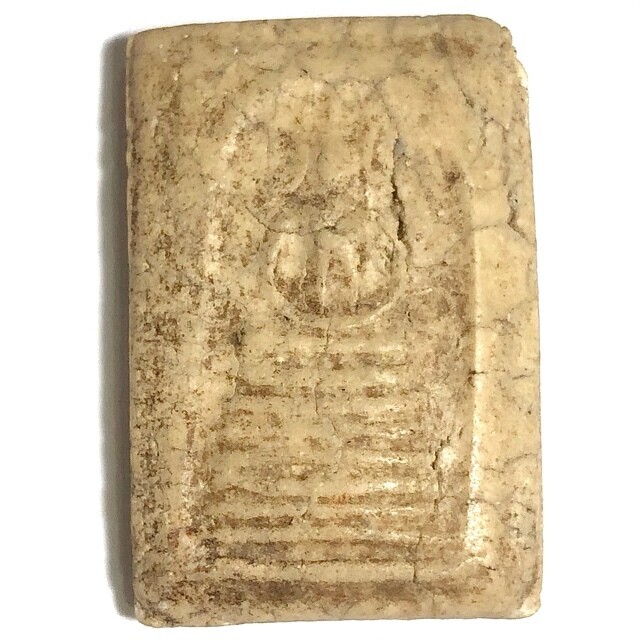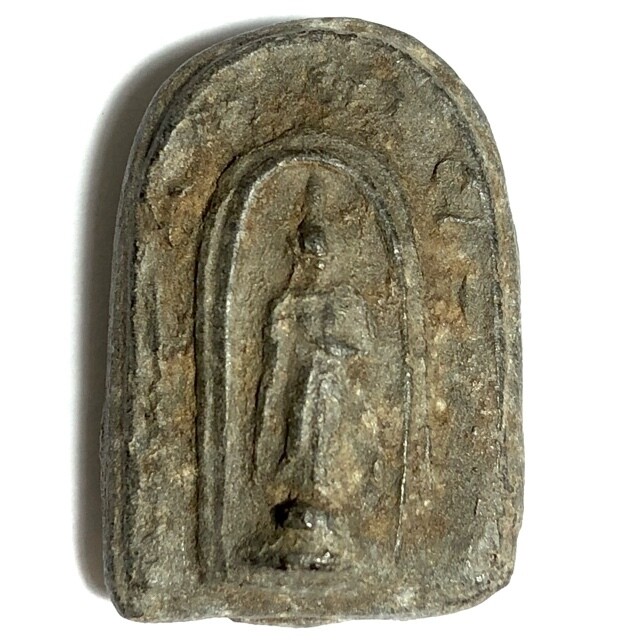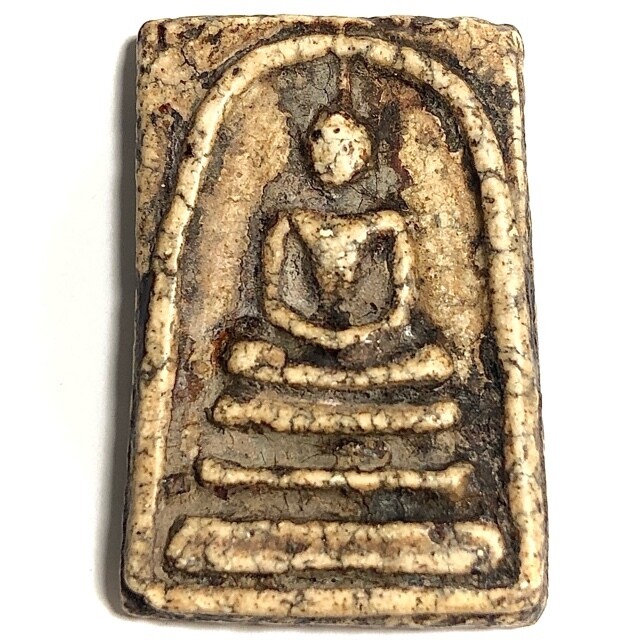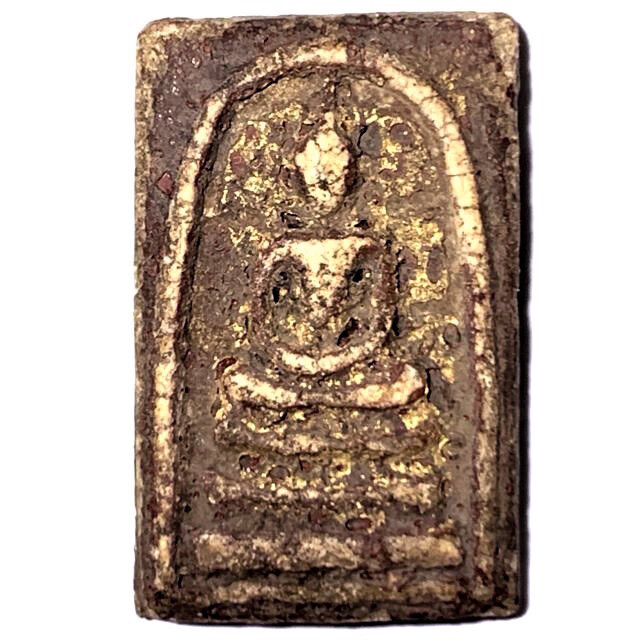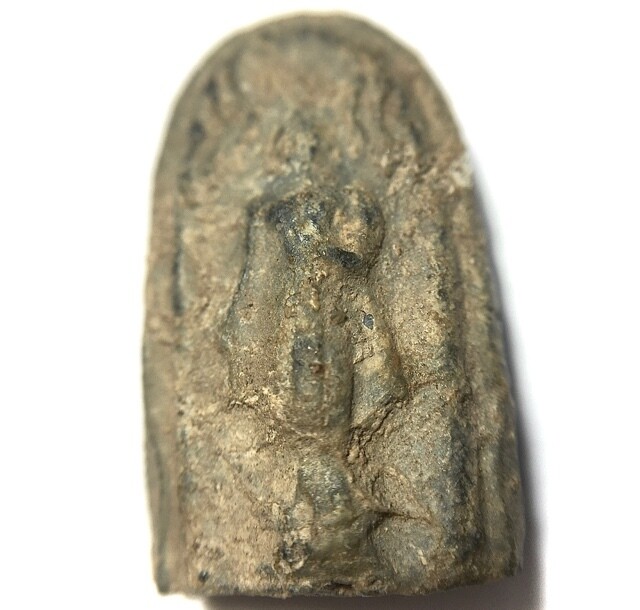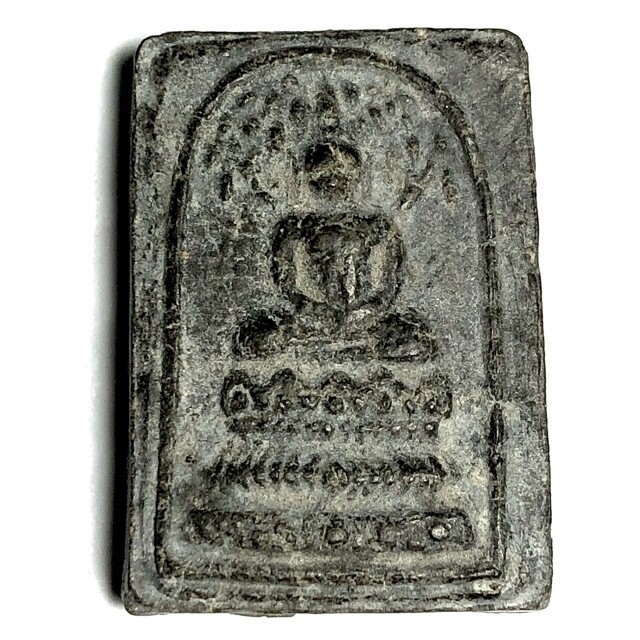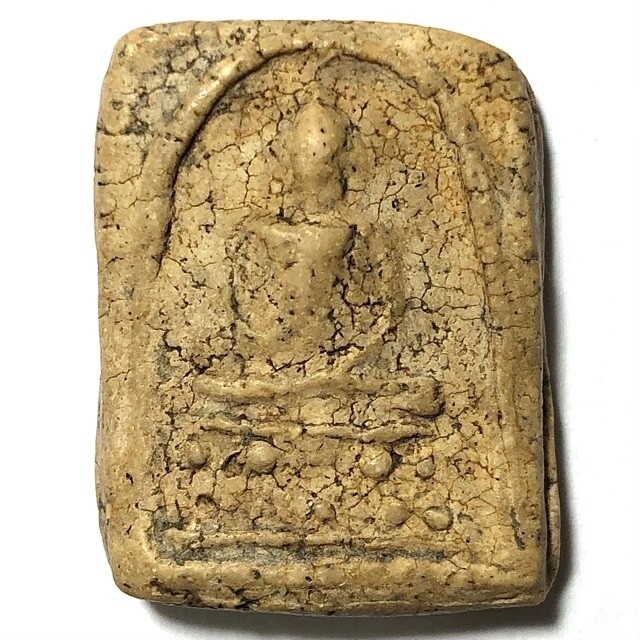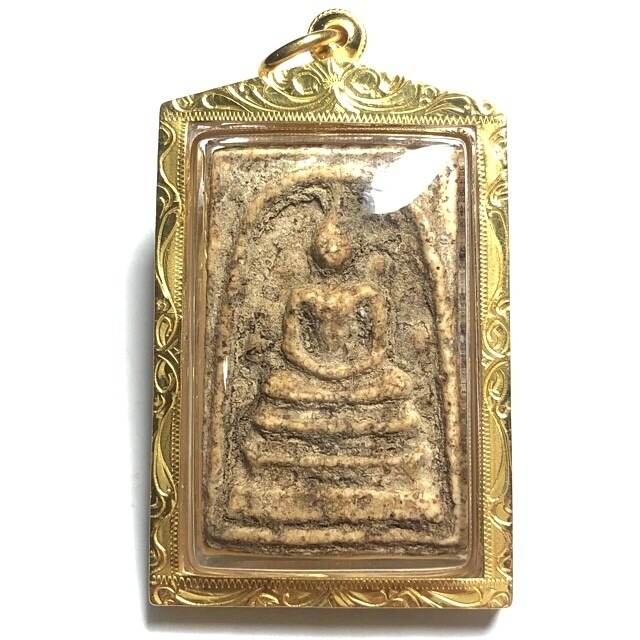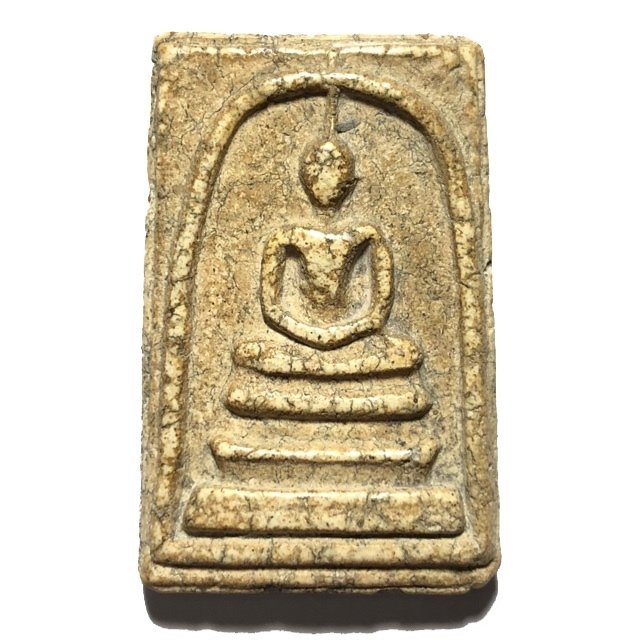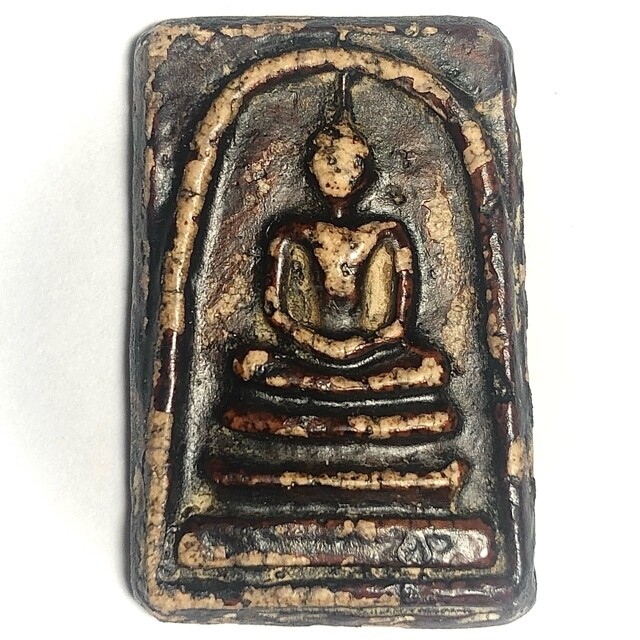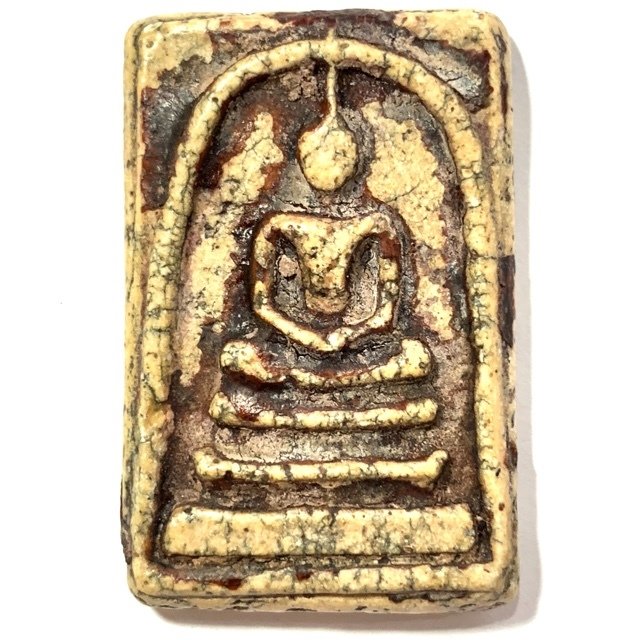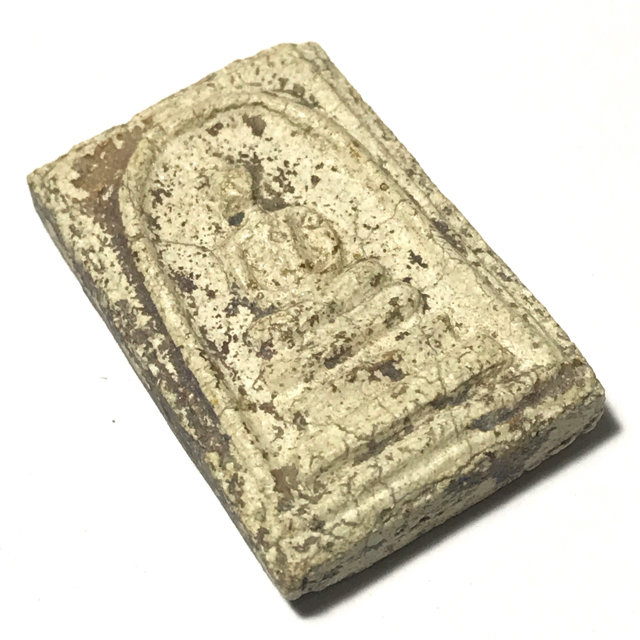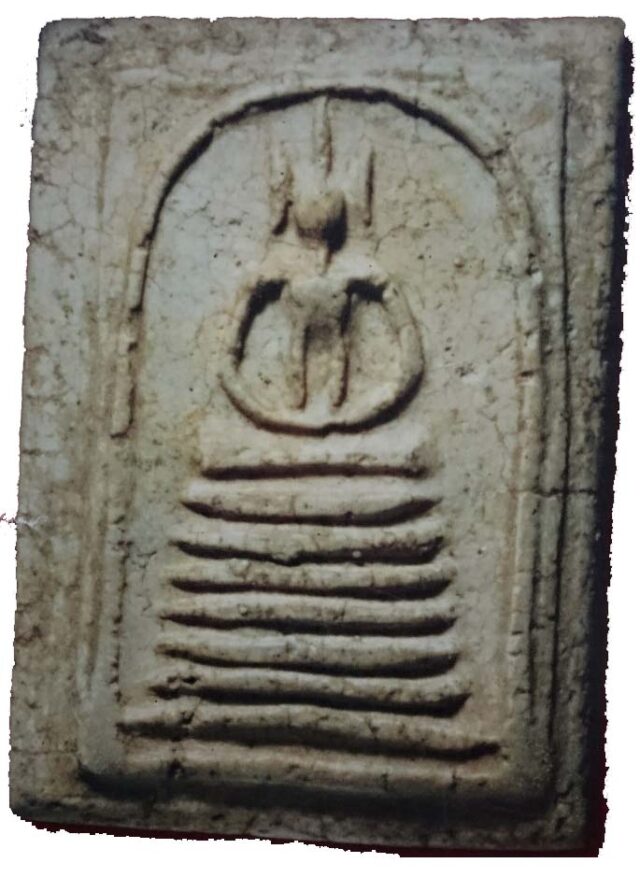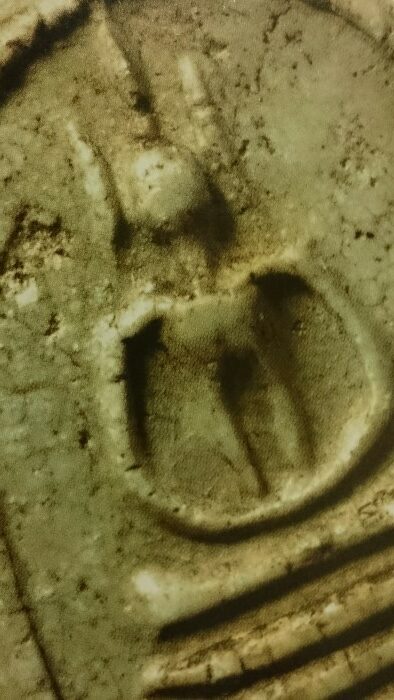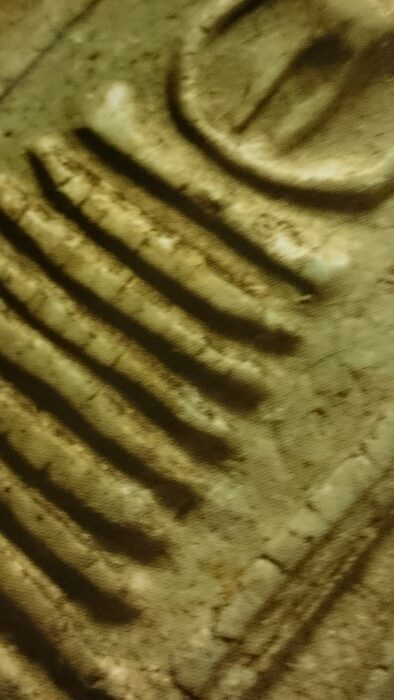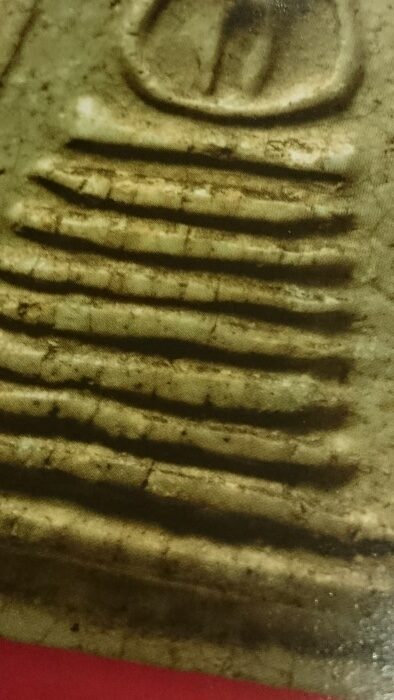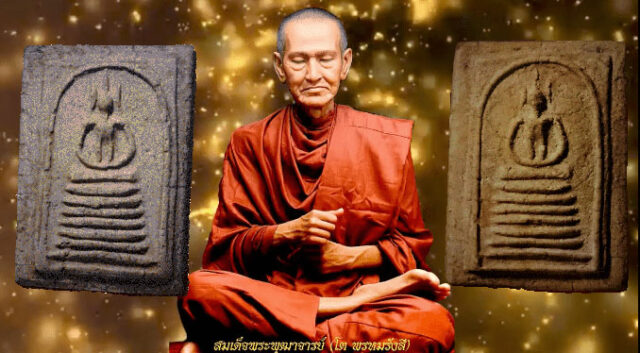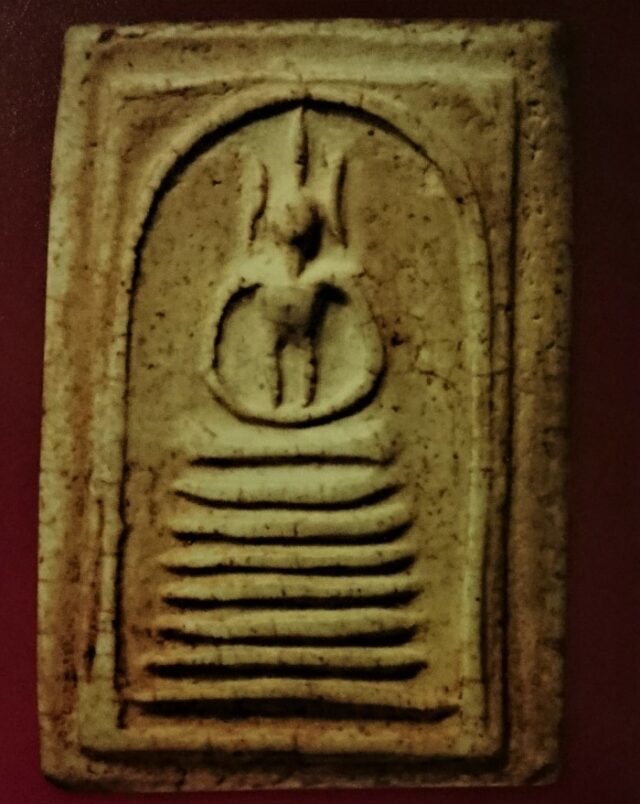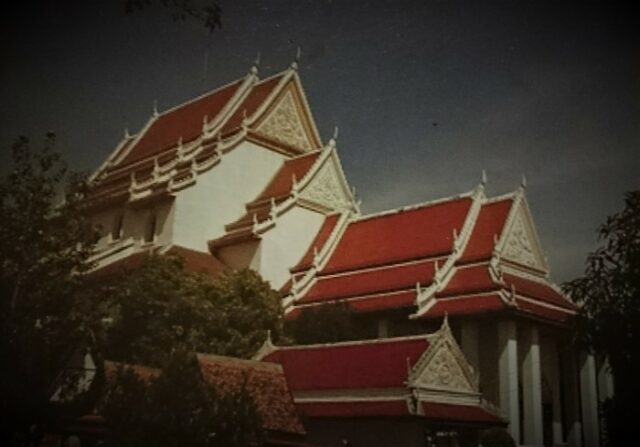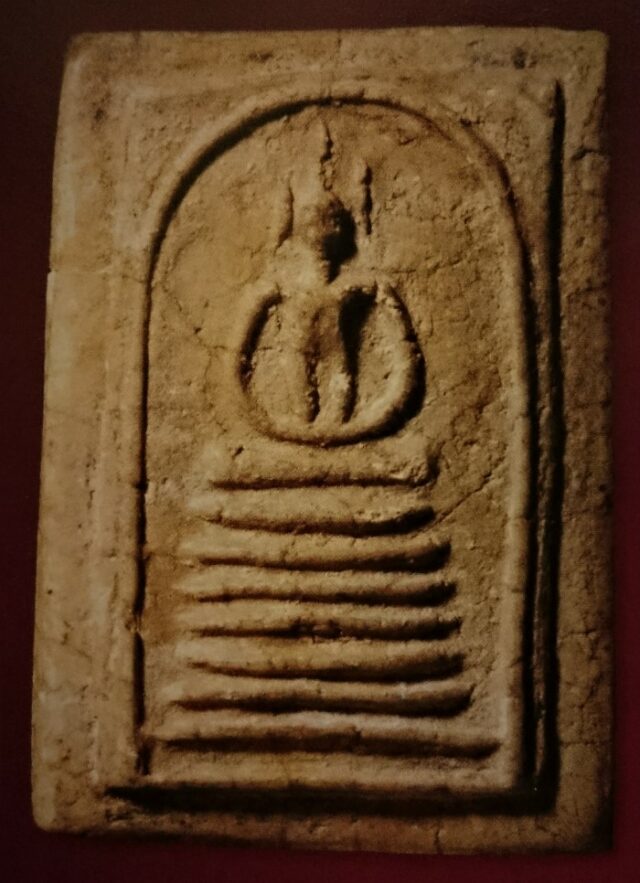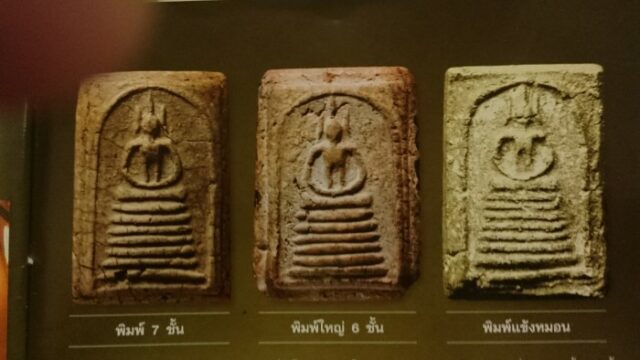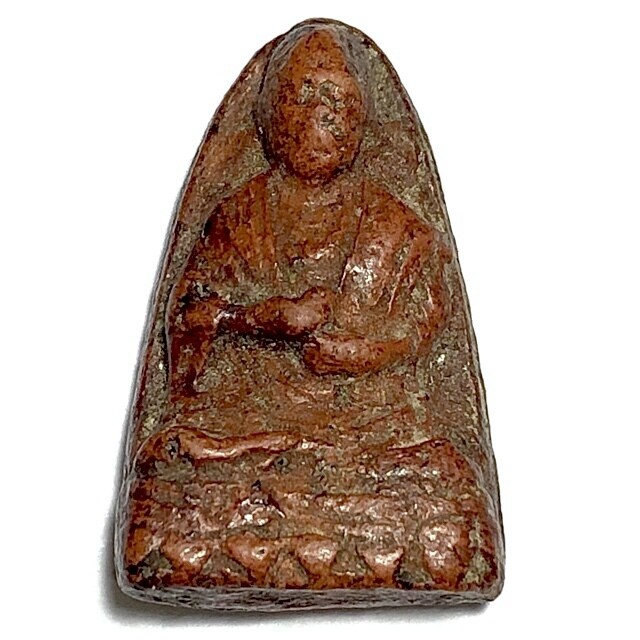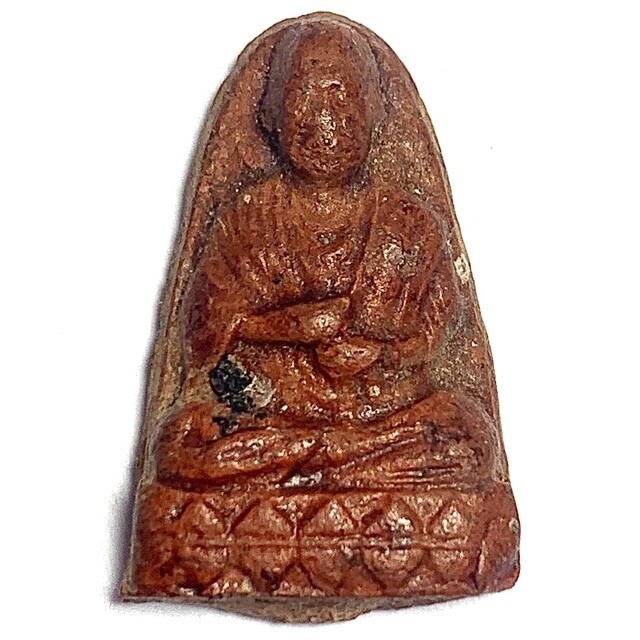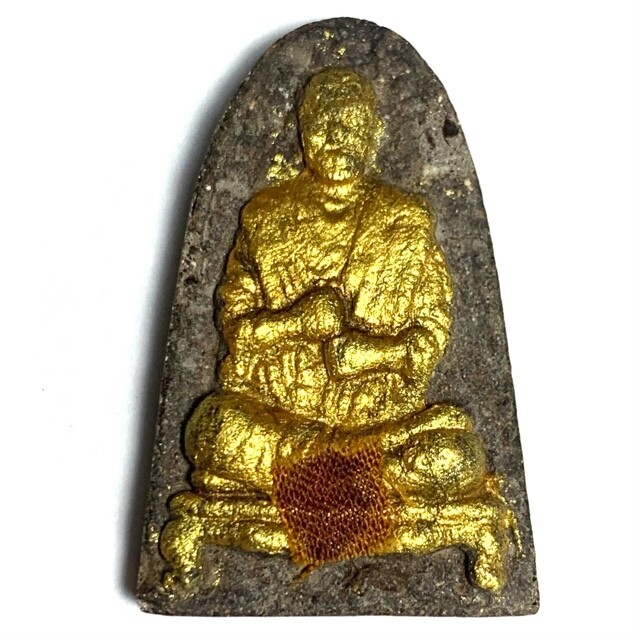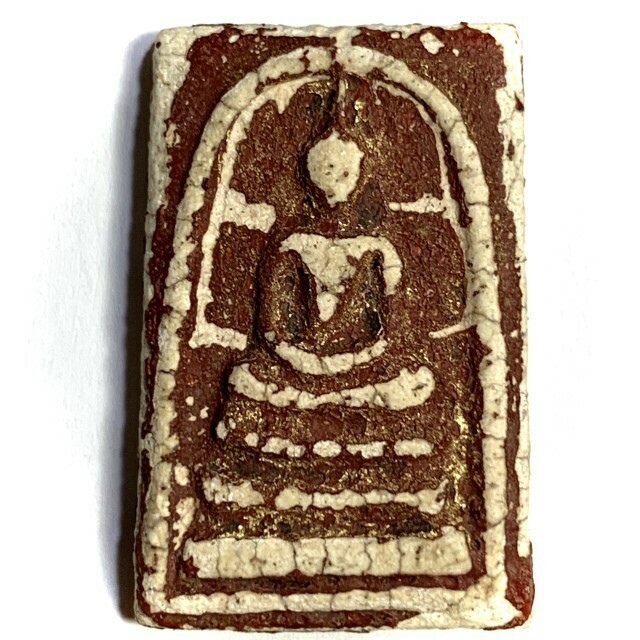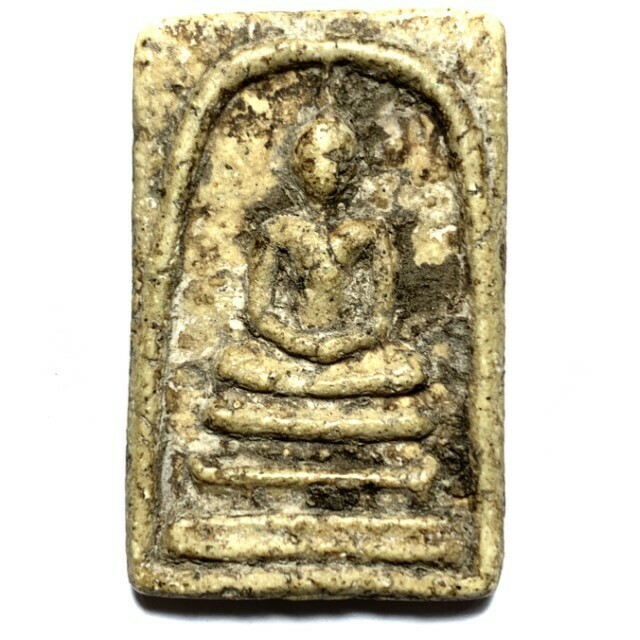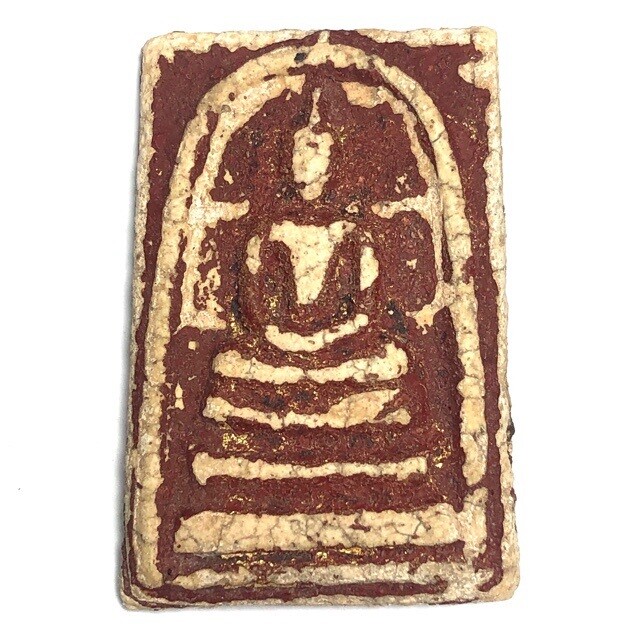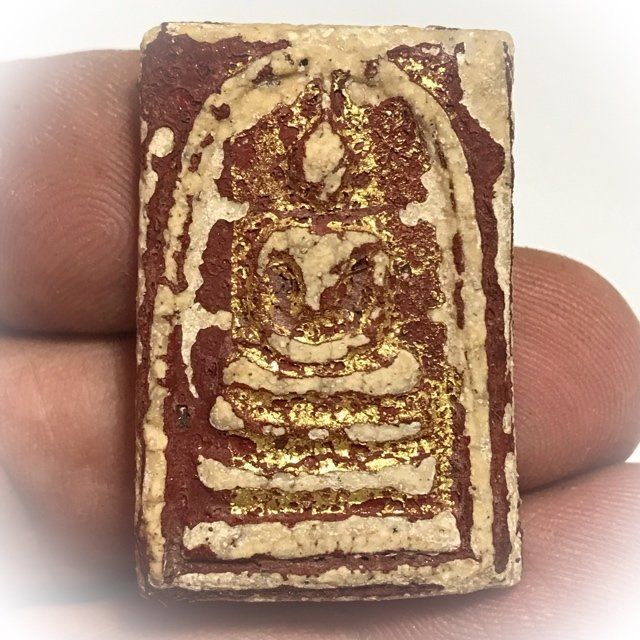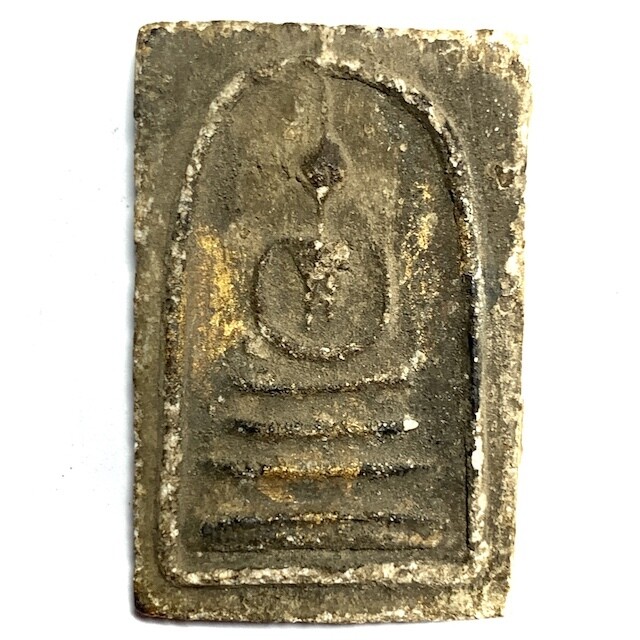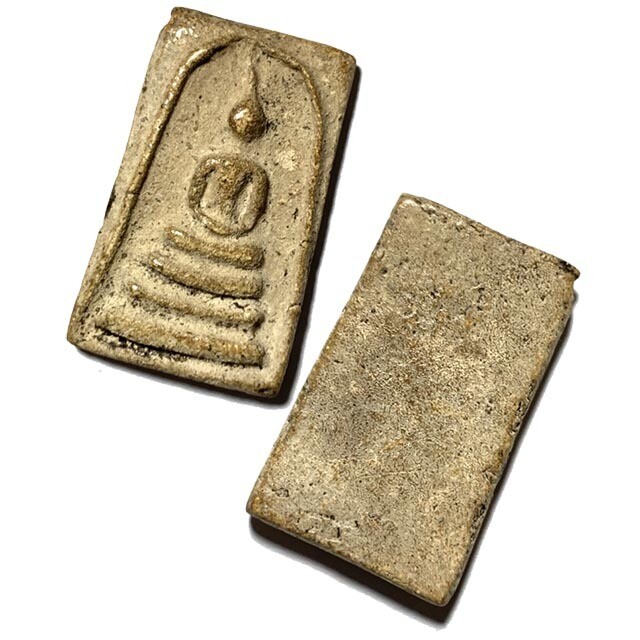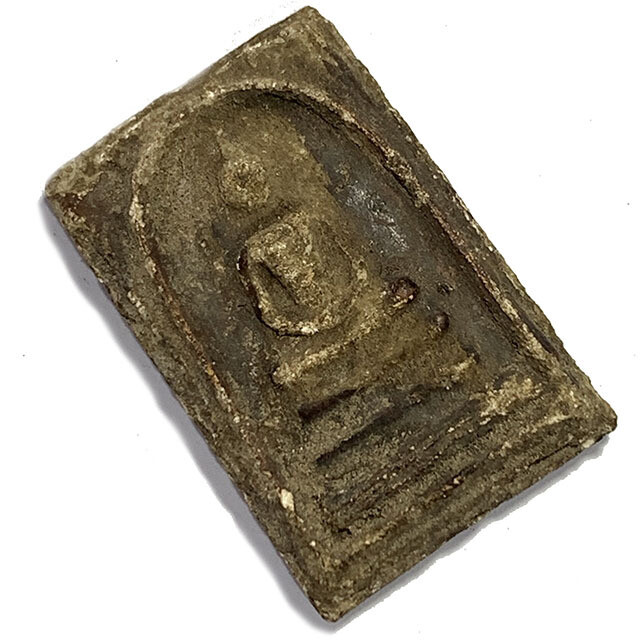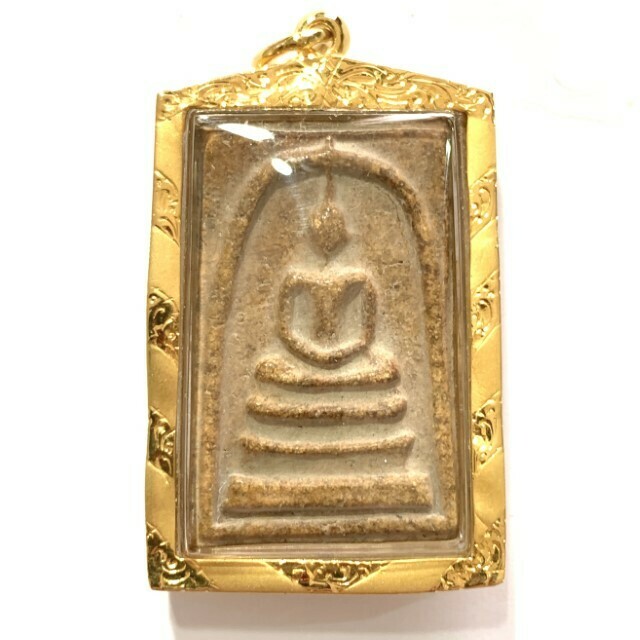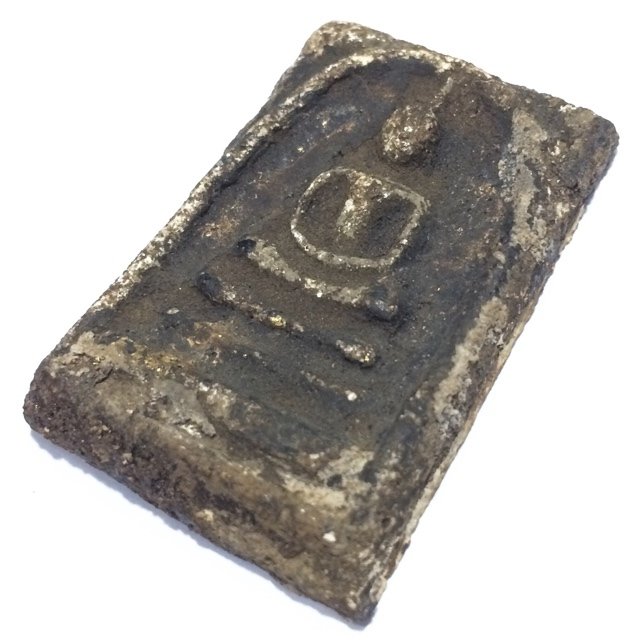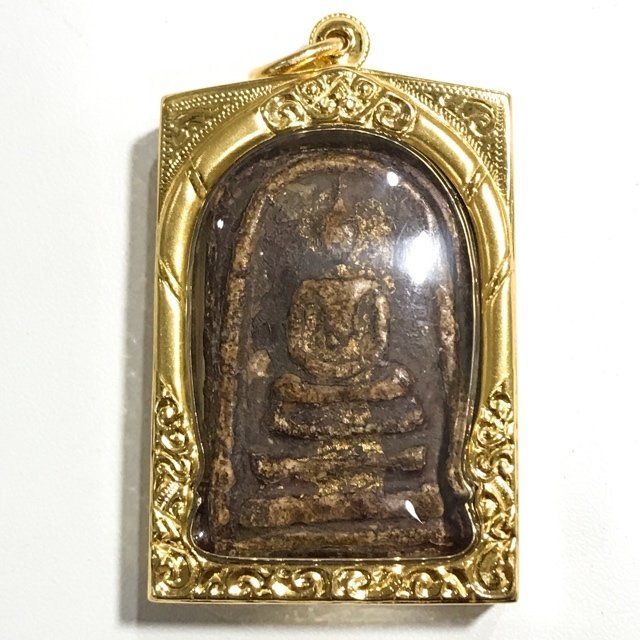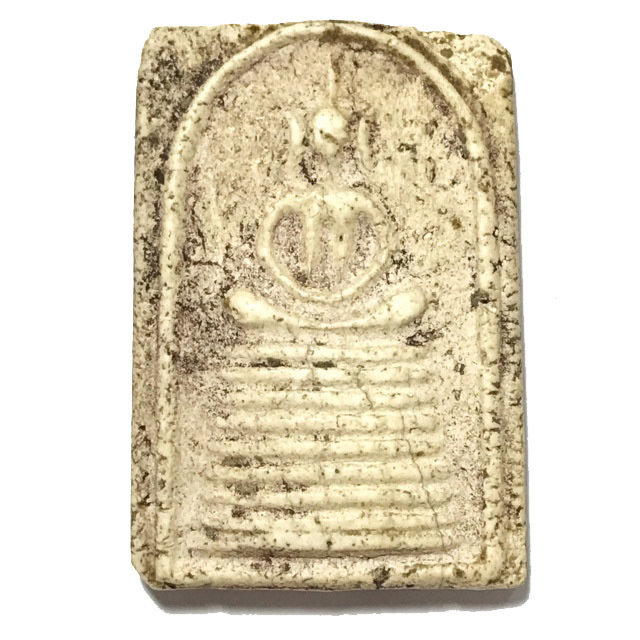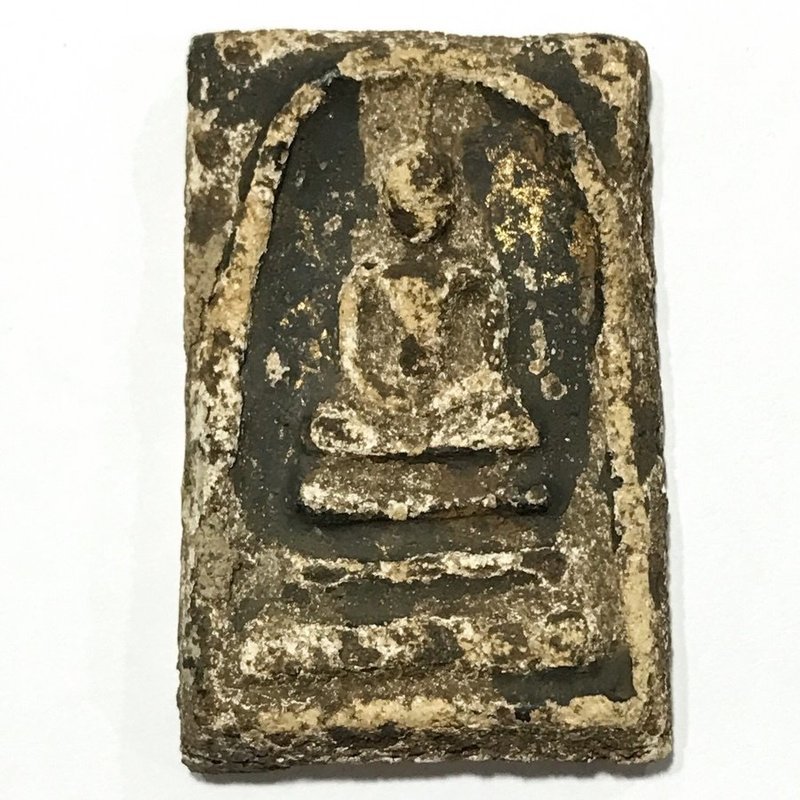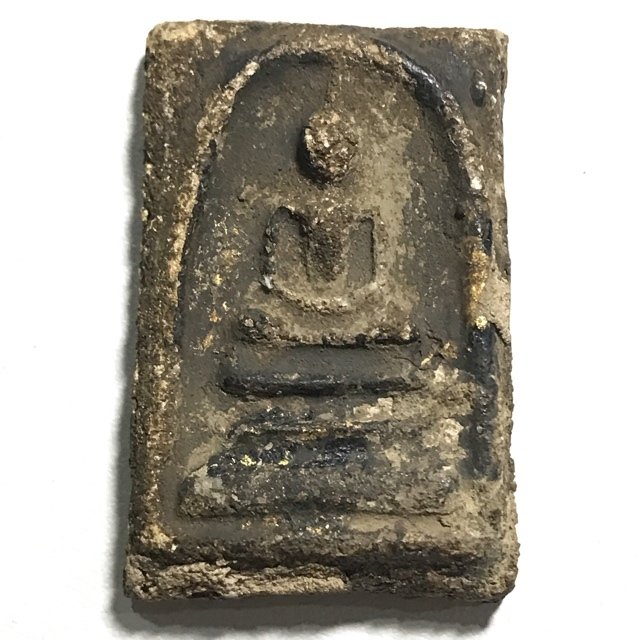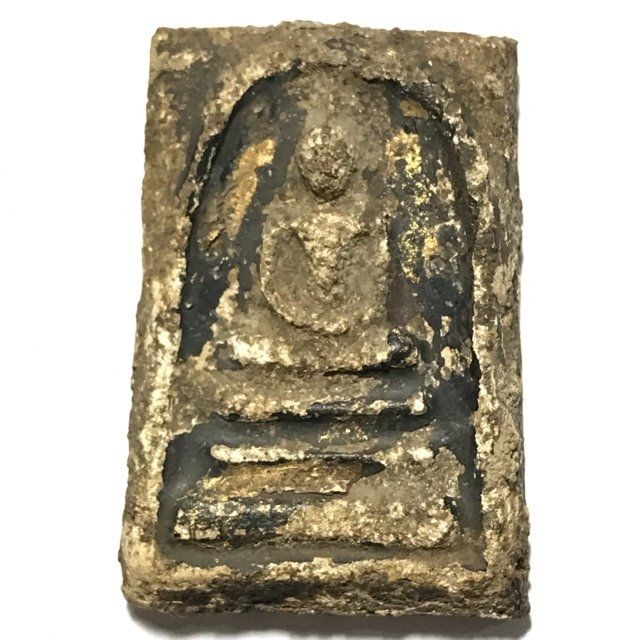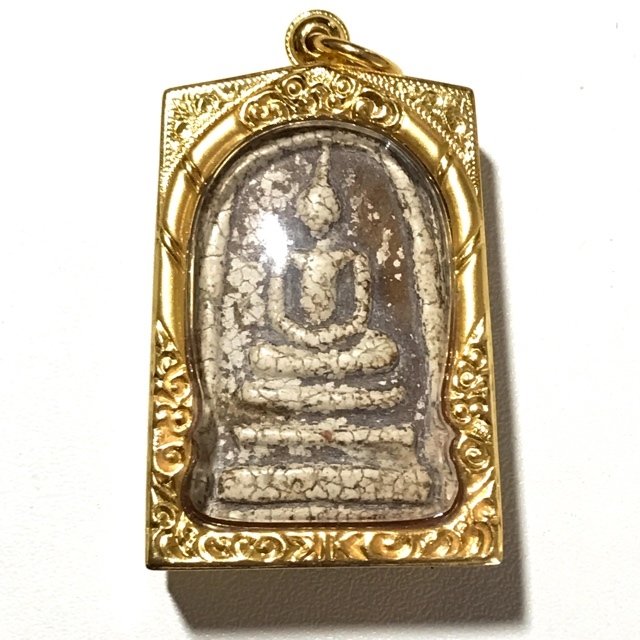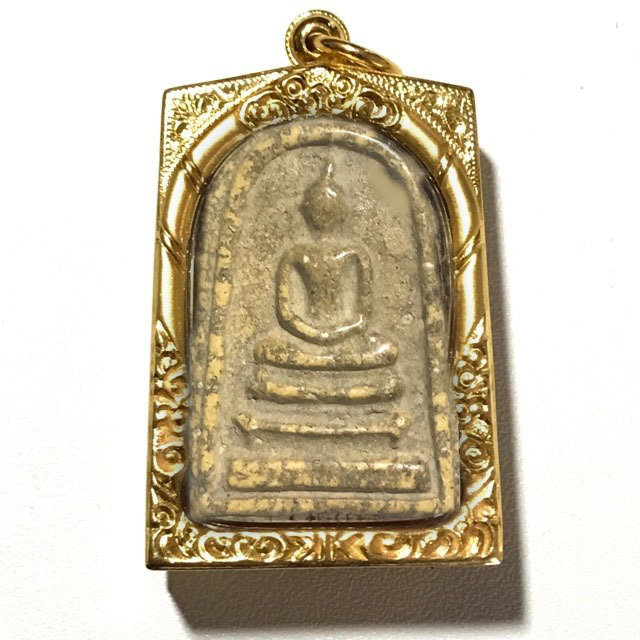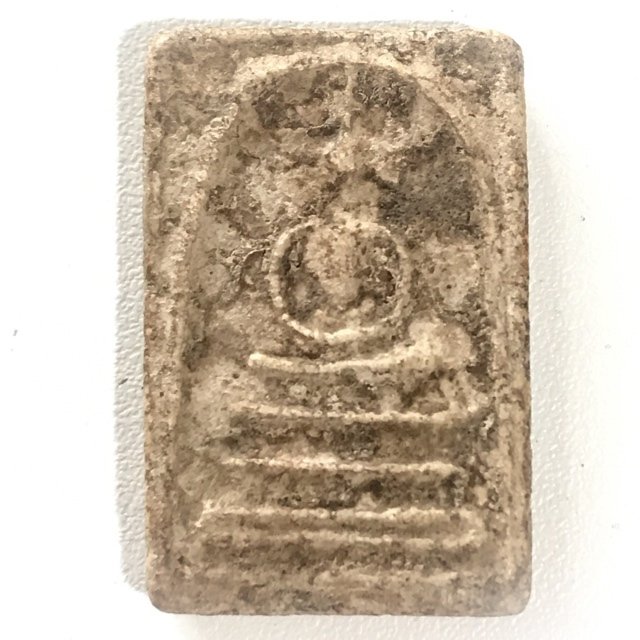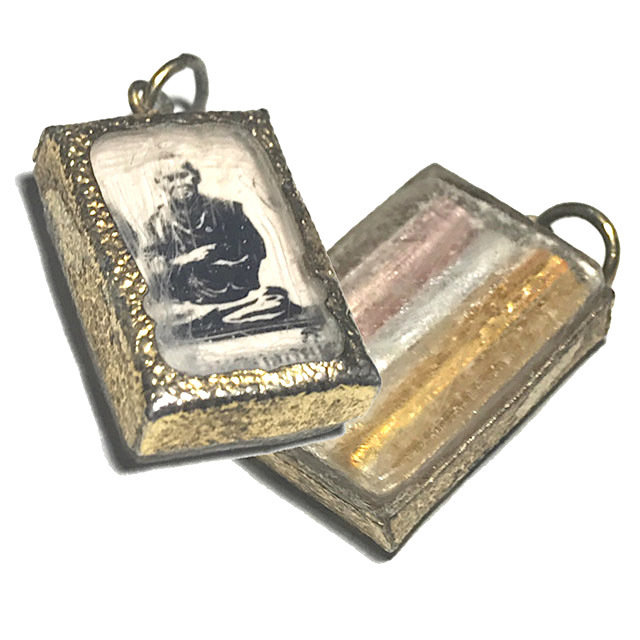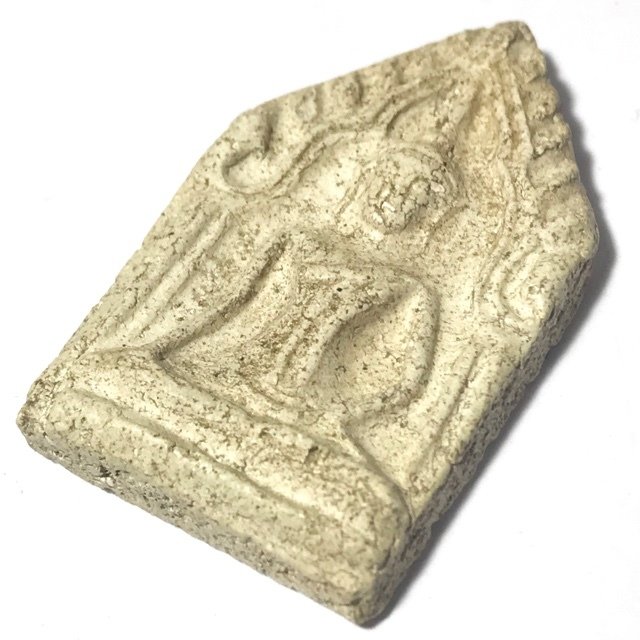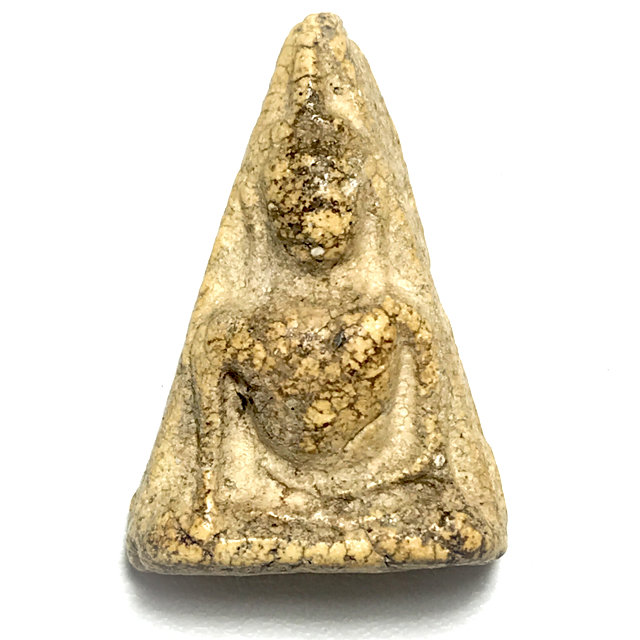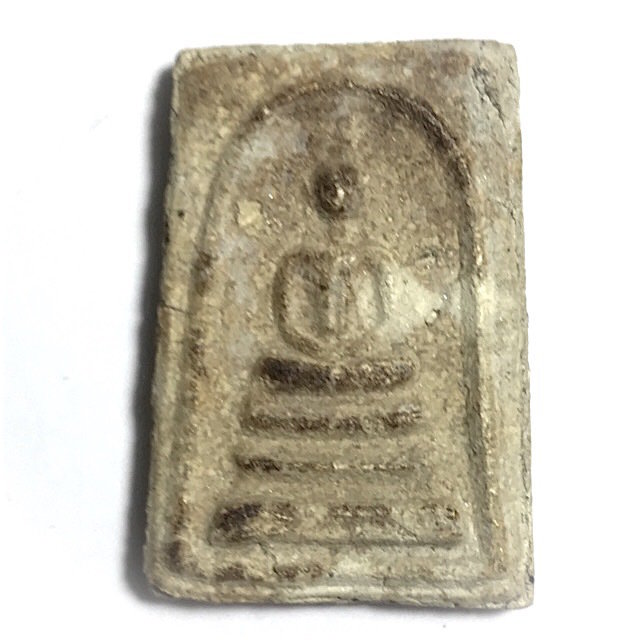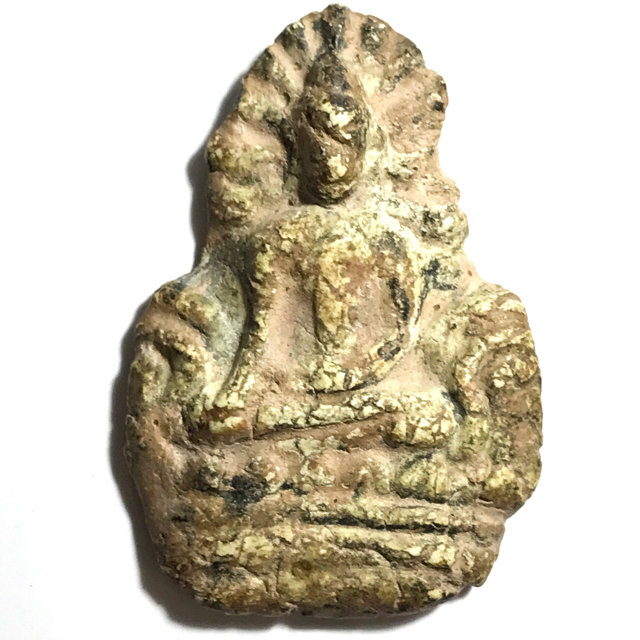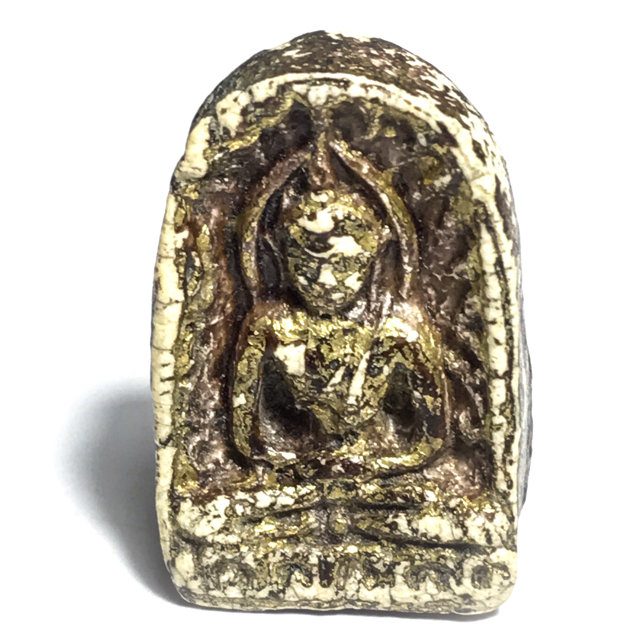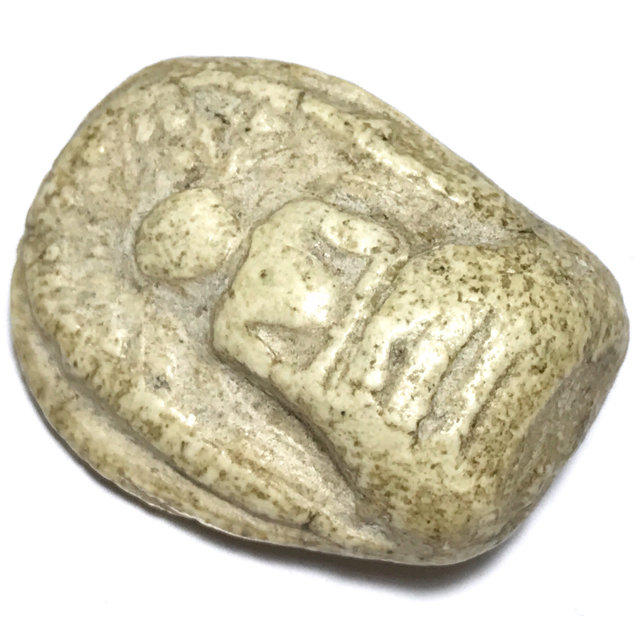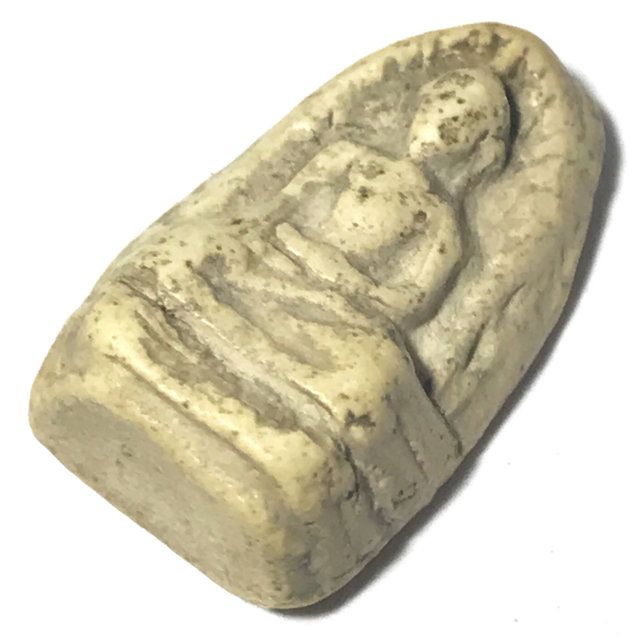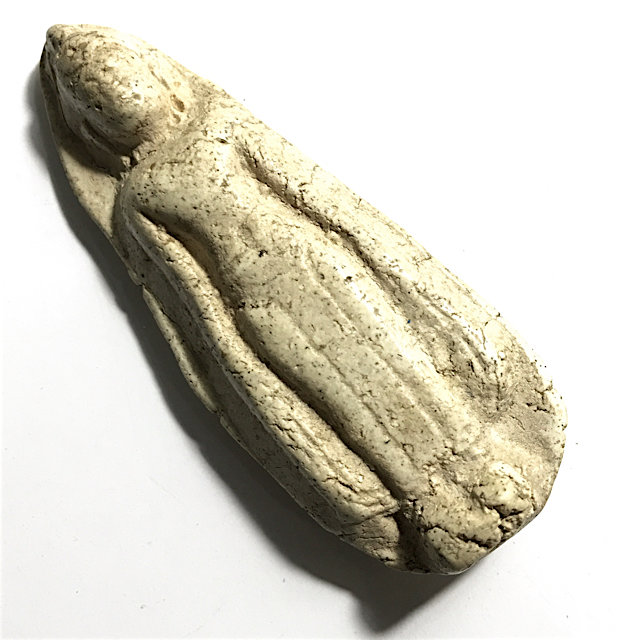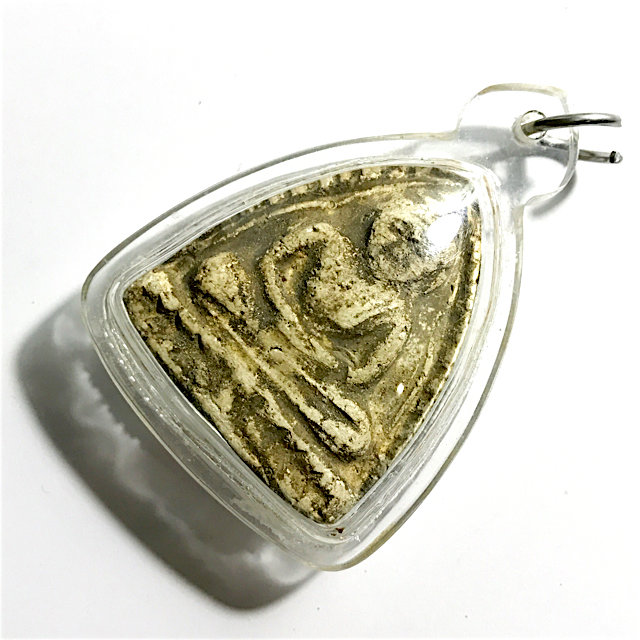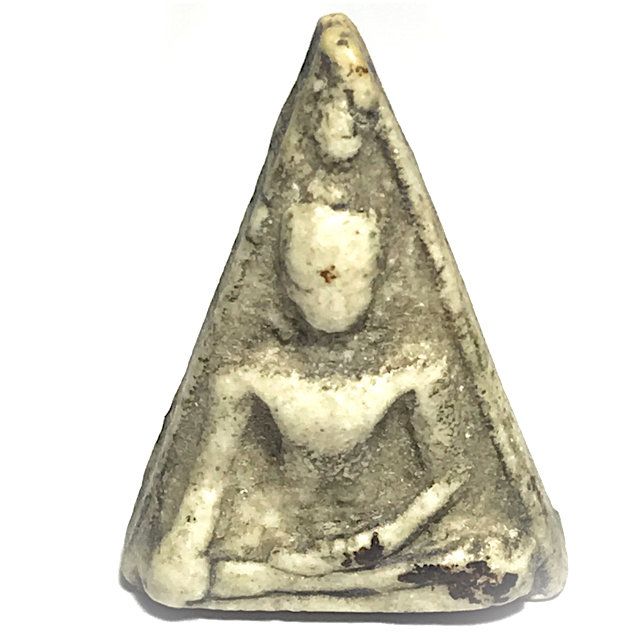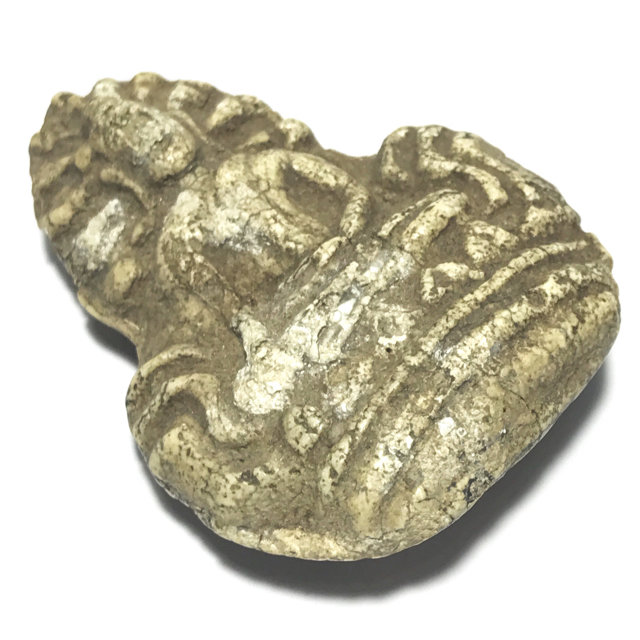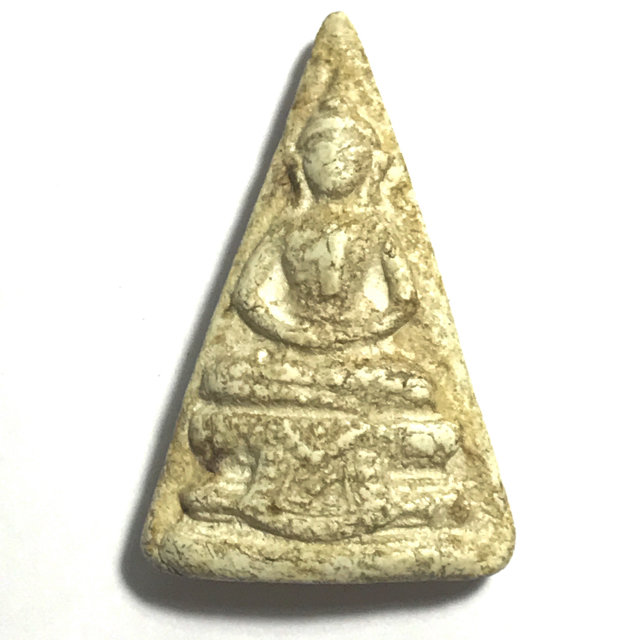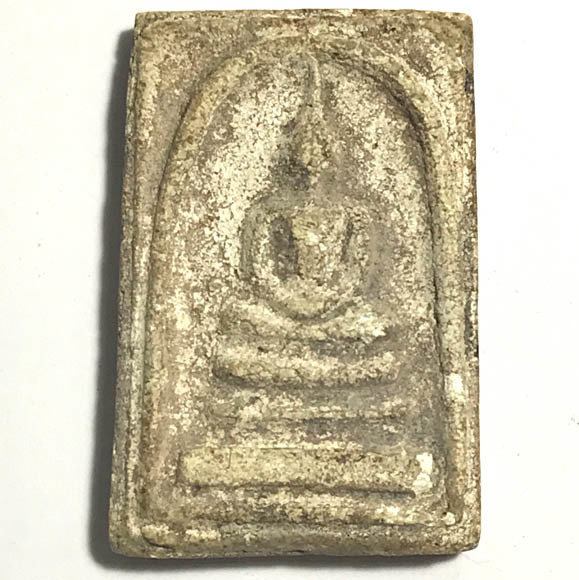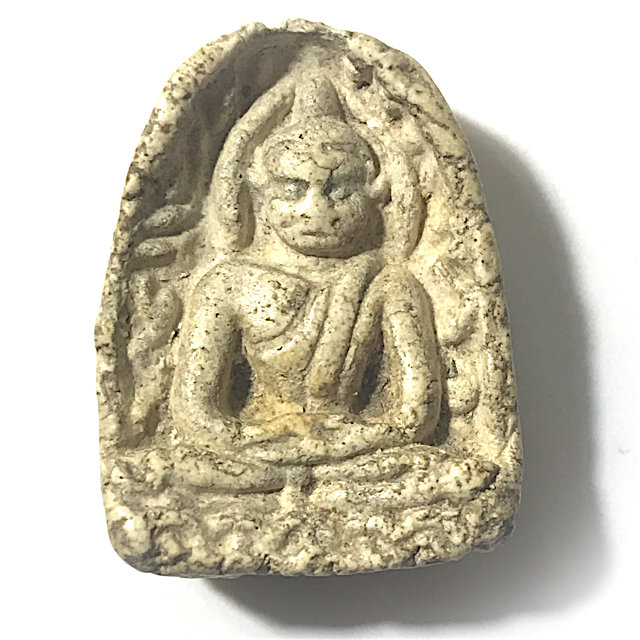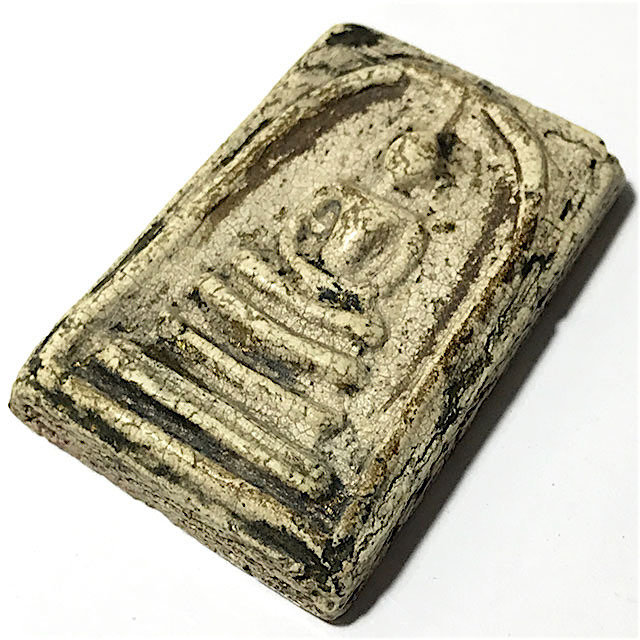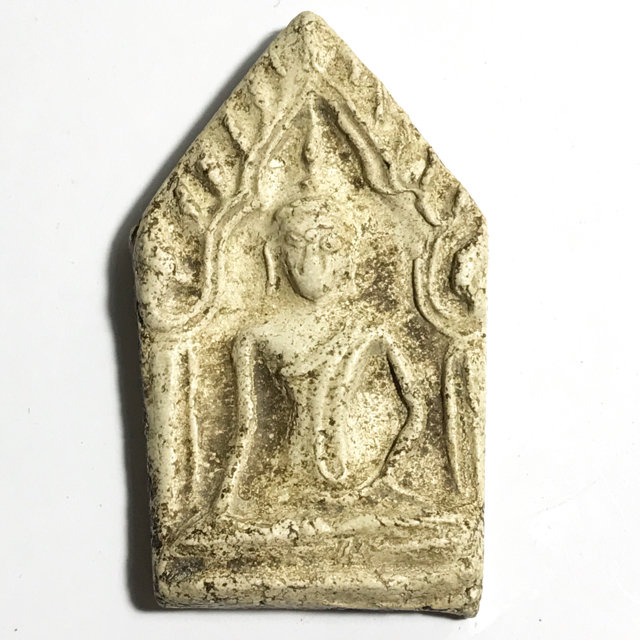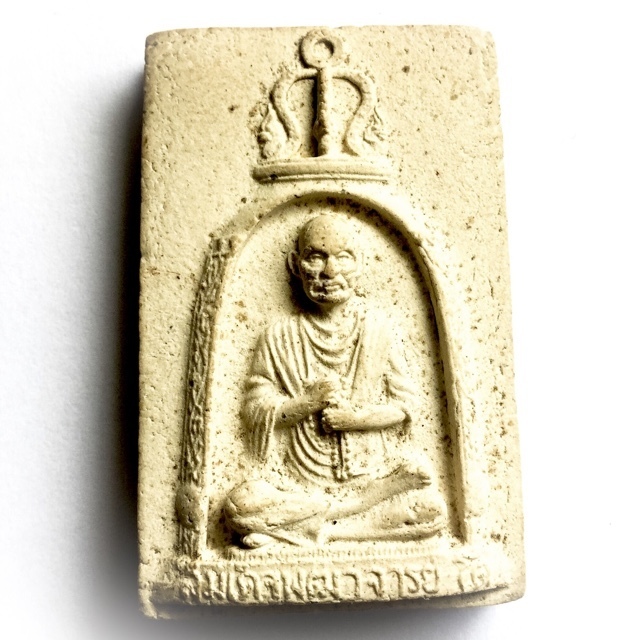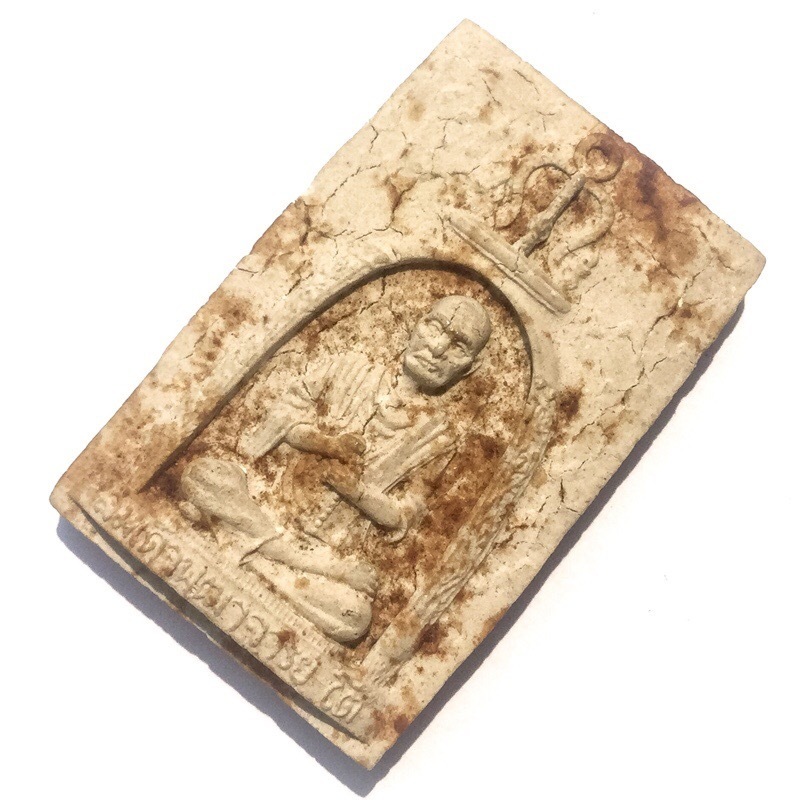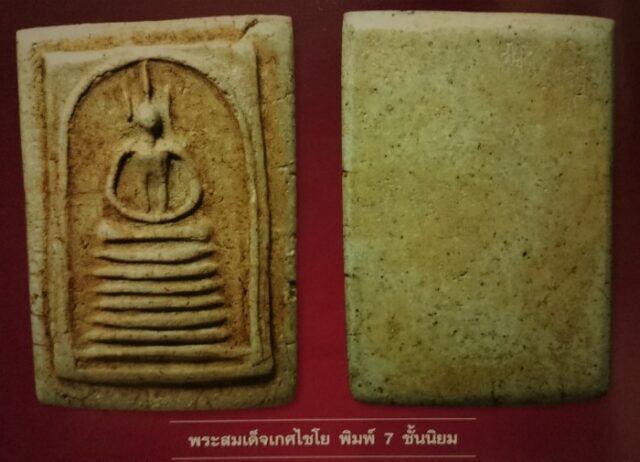
Pra Somdej Wat Gaes Chaiyo.
The legendary and immortally famous, and sacred Pra Somdej Gaes Chaiyo amulet, is an amulet that has been recognised internationally on a global scale, as the king of all Thai Amulets, as well as being “the amulet of millionaires“. Created by Somdej Pra Puttajarn (To Prohmrangsi), abbot one of the three great temples, namely Wat Rakang, Wat Bang Khun Porom and Wat Chaiyo. that has been accepted as a standard. The Pra Somdej Gaes Chaiyo amulet, is Popular, the highest worship at this time.
Origins of the Pra Somdej Gaes Chaiyo amulet
The Pra Somdej Gaes Chaiyo are said, to have been found the Buddha image inside the “Phra Maha Buddha Pim”, which is a large Buddha image that Somdej Pra Puttajarn (To) Prohmrangsri, is the creator in Chaiyo Woramahawihan Temple, Ang Thong. This temple is a temple that Chao Prakun Somdej. Built on the land of your eyes to dedicate the charity to the mother and the eyes By bringing the name of the mother “Gaes” and the name of the eye “Chai” together as “Gaes Chaiyo”
Inside the temple, there is a big Buddha image. It is said that Chao Prakhun Somdej built the statue of the temple And created the Pra Somdej, & hid them inside the Kru Hiding Place Chamber of the main Buddha image. It is these inimitably outstanding amulets, which we know to be called the famous ‘Pra Somdej Gaes Chaiyo’.
“Phra Somdej Gaes Chaiyo” is a muan sarn sacred powder Buddha amulet, that has been recognised as having been created by the great legendary monk, Somdej Pra Puttajarn (To Prohmangsi), abbot of one of the three holy temples famous for his Pra Somdej amulets, namely Wat Rakang, Wat Bang Khun Prohm and Wat Gaes Chaiyo. His Pra Somdej amulets, are considered the King of all Thai Buddhist amulets, & have been accepted as the highest standard of all amulets. Popular, and remaining the highest worshiped amulet of all time, as has always been since their first creation. The Number 1 Pra Somdej amulets of all time, stand uncontested as coming from Somdej Pra Puttajarn (To Prohmrangsi).
The origin of Phra Somdej Gaes Chaiyo is that they were found the within the Buddha statue inside the hiding chamber of the “Pra Maha Buddha Pim”. This is a statue, which is a large Buddha image that Somdej Pra Puttajarn (To) Prohmrangsi, is said to have built, in Chaiyo Woramahawihan Temple, Ang Thong. This temple is a temple that Jao Prakun Somdej. Built in the open air, to dedicate merits to Somdej Toh’s mother and By bringing the name of his mother “Gaes” (with the double-meaning of ‘Gaes’ meaning ’Pra Gaes/Pra Gaes), & the name of the eye “Chai” together as “Gaes Chaiyo”
Inside the temple, there is a big Buddha image. It is said that Jao Prakhun Somdej created the Pra Somdej as he was abbot of the temple, hiding a large number of the Pra Somdej, packed inside the main Buddha image. These classic amulets have now come to be known around the whole wide world as the “Pra Somdej Gaes Chaiyo” amulet series, and among with the Pra Somdej Wat Rakang Kositaram, & Pra Somdej Wat Bang Khun Prohm, are among the rarest of all amulets to find, and the most expensive!
In the year 2430, there was a new restoration of the temple. The construction caused the Buddha image to shake until it was damaged. The temple received in the royal patronage to be rebuilt until completed in 1891, ready to offer the name “Pra Maha Buddha Pim”, and changed the name of the temple to Wat Chaiyo Worawihan as a royal monastery ever since then.
Pra Somdej Gaes Chaiyo
The “Phra Somdej Gaes Chaiyo” is a square print, made from the sacred muan sarn powder clay created by “Somdej Pra Puttajarn (To Prohmrangsi)” of Wat Rakang, and is found with 7, 6 and 5 tiered daises.
The amulet is among the rarest of Somdej Toh’s Pra Somdej, has always been, & is still currently, very popular worldwide with high end Amulet collectors.
The Pra Somdej Gaes Chaiyo is rarely seen these days, but is sometimes seen if there is no Pra Somdej Wat Rakang or Phra Somdej Bang Khun Prohm to be found, aficionados may bring Pra Somdej Gaes Chaiyo to amulet competitions, to represent the Pra Somdej, as a member of the Benjapakee “top 5” regional amulets, of all history of Thailand.
The Pra Somdej Gaes Chaiyo, is a now a legendary amulet that was hidden within the Buddha Statue that was built by Somdej Pra Puttajarn Toh, at Wat Gaes Chaiyo, which was yet another statue built in dedication to his mother, and the fact he used to sleep at the temple as a child very often. Somdej Toh was prone to building large Buddha statues (Pra Toh = Big/Large Buddha, ‘Toh’, as in Somdej ‘Toh’), to mark important places and events in his life, throughout his trajectory.
By breaking into the Kru hiding place chamber inside of the “Phra Maha Phuttha Pim”, which is a large Buddha image that Chao Prakun Somdej built in Wat Chaiyo Worawawihan, Ang Thong, creating a large Buddha image in Chaiyo Temple, a large number of Pra Somdej amulets were also found, hidden there when it was built by Somdej Toh.
The giant sleeping Buddha statue at Wat Sadter, is a memorial to remember Somdej Pra Puttajarn (Toh) Prohm Rangsri’s mother, who had already passed away.
He built this, because the mother used to take him as a child, to stay at Chaiyo Subdistrict when he was very young.
Which according to history, Somdej Pra Puttajarn (Toh Prohmangsi) created, as he came down river and stopped to rest at Chaiyo, as the evening fell.
This gave birth to a poetic saying, spoken by devotees throughout the eras, have been heard to say that “Somdej Toh sleeps at Ayutthaya (Phra Non Wat Sadter), he came to sit at Phra Maha Phuttha Pim, at the temple of Get Chaiyo. He stopped at Wat In Bang Khun Prohm for rest, and came to Wat Rakang for Lent”
For the creation of the sacred Phra Somdej Gaes Chaiyo, one can easily see that this series differ somewhat, in style, form, and details, from the Pra Somdej Wat Rakang, And Pra Somdej Bang Khun Prohm series amulets.
There are much more angular, design features, and details, which are clearly visible in the mold of the block press of the Pra Somdej Get Chaiyo series.
The Wat Rakang and Phra Somdej Bang Khun Prohm series amulets, were created mostly (preferred models) by the Chang Sip Moo artisans, many by Chang Luang Wijarn, Luang Wijit, and Luang Sittigarn. these three great artisans, created extremely subtle designs, with delicate beauty. their creations are well known to have a special outstanding set of features that are inimitable, and eternally classic.
However, the inimitably and extremely eye catching features of the Pra Somdej Gaes Chaiyo series, also has its own different kind of deep beauty, and is also unique to unprecedented levels compared to all other Pra Somdej amulets from other temples .
The Artistic Design of the Phra Somdej Gaes Chaiyo Block Presses
The main unique features spoken of in Thailand in Collector circles, and with aficionados, is “the Mirror frame exterior, (Ok Rong/Ok Wee/Ok Talord central chest groove), the Hoo Bai Sri (angled ears), and Hak Sork (broken elbows)”
These are unique features that the artisan of the ‘Block Mae Pim’ block press has engraved into the detailed relief and specific features of the Buddha (angled ears, split, half split, long or short chest, bowed or angled elbows) for each different block press, surrounding arch, and raised frame edges, which hold each Pim (model) unique and highly distinctive.
Below. Pra Somdej Gaes Chaiyo Pim 7 Chan, Pim 6 Chan, and the Rare Pim Khaeng Hmorn
Almost every Pim of Pra Somdej Wat Gaes Chaiyo, Wat Rakang and Bang Khun Prohm, are seen to possess their specific features, also depending on which block press from which of the ‘Chang Sip Moo’ artisans the amulets are pressed from. Another obvious part, that distinguishes the Pra Somdej Wat Get Chaiyo amulet, is the “base that supports the Buddha image”.
It can be seen that the base of Pra Somdej Gaes Chaiyo has a number of bases up to 6 or 7 tiered daises, and the rare ‘Pim Khao Buang’ in the most popular models, but it is said, that some ‘Pim Plaek’ (rare strange models), have been found with nine, and even eleven tiered daises, it is believed in some groups. What is for sure, is that there is a.7 tiered Prok Po Bodhi leafed Buddha version, as well as various block presses of both the seven and six tiered daises versions, resulting in a seemingly wide variety of different Pim.
Somdej Pra Puttajarn (Dto) Prohmrangsri
